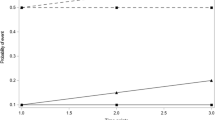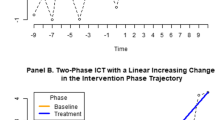Abstract
The randomized block design is routinely employed in the social and biopharmaceutical sciences. With no missing values, analysis of variance (AOV) can be used to analyze such experiments. However, if some data are missing, the AOV formulae are no longer applicable, and iterative methods such as restricted maximum likelihood (REML) are recommended, assuming block effects are treated as random. Despite the well-known advantages of REML, methods like AOV based on complete cases (blocks) only (CC-AOV) continue to be used by researchers, particularly in situations where routinely only a few missing values are encountered. Reasons for this appear to include a natural proclivity for non-iterative, summary-statistic-based methods, and a presumption that CC-AOV is only trivially less efficient than REML with only a few missing values (say≤10%). The purpose of this note is two-fold. First, to caution that CC-AOV can be considerably less powerful than REML even with only a few missing values. Second, to offer a summary-statistic-based, pairwise-available-case-estimation (PACE) alternative to CC-AOV. PACE, which is identical to AOV (and REML) with no missing values, outperforms CC-AOV in terms of statistical power. However, it is recommended in lieu of REMLonly if software to implement the latter is unavailable, or the use of a “transparent” formula-based approach is deemed necessary. An example using real data is provided for illustration.
Similar content being viewed by others
References
Box, G. E. P. (1954). Some theorems on quadratic forms applied in the study of analysis of variance problems, I. Effect of inequality of variance in the one-way classification.Annals of Mathematical Statistics, 25, 290–302.
Corbeil, R. R. and Searle, S. R. (1976). Restricted Maximum Likelihood (REML) Estimation of Variance Components in the Mixed Model.Technometrics, 18, 31–38.
Hocking R. R. (1985).The Analysis of Linear Models, Monterey, CA: Brooks-Cole.
Little, R. J. A. and Rubin, D. B. (1987).Statistical Analysis with Missing Data, John Wiley & Sons, Inc.
May, W. L. and Johnson, W. D. (1995). Some Applications of the Analysis of Multivariate Normal Data With Missing Observations.Journal of Biopharmaceutical Statistics, 5, 215–228.
Patterson, H. D. and Thompson, R. (1971). Recovery of interblock information when block sizes are unequal.Biometrika, 58, 545–554.
Satterthwaite, F. F. (1941). Synthesis of variance.Psychometrika, 6, 309–316.
Searle, S. R. (1971).Linear Models, New York: John Wiley.
Author information
Authors and Affiliations
Rights and permissions
About this article
Cite this article
Mehrotra, D.V. A cautionary note on the analysis of randomized block designs with a few missing values. Statistical Papers 45, 51–66 (2004). https://doi.org/10.1007/BF02778269
Received:
Revised:
Issue Date:
DOI: https://doi.org/10.1007/BF02778269




